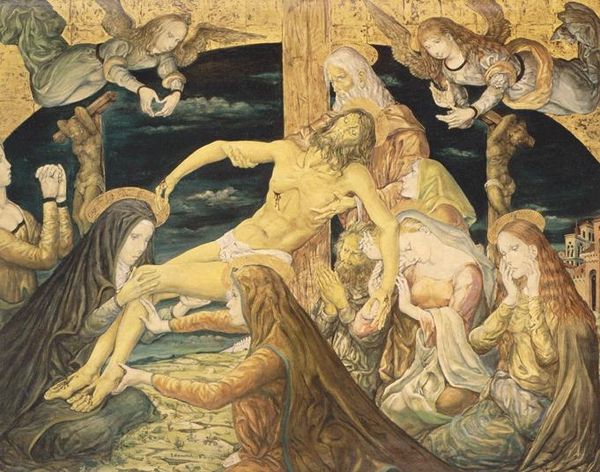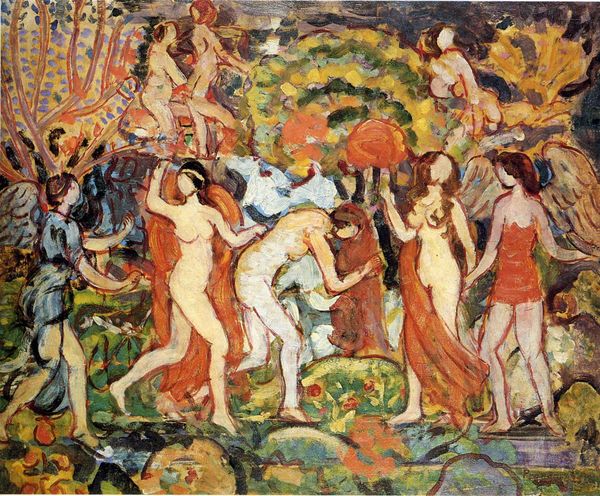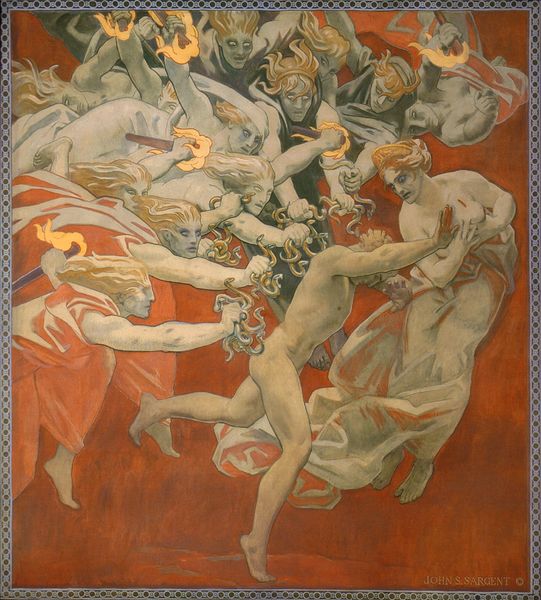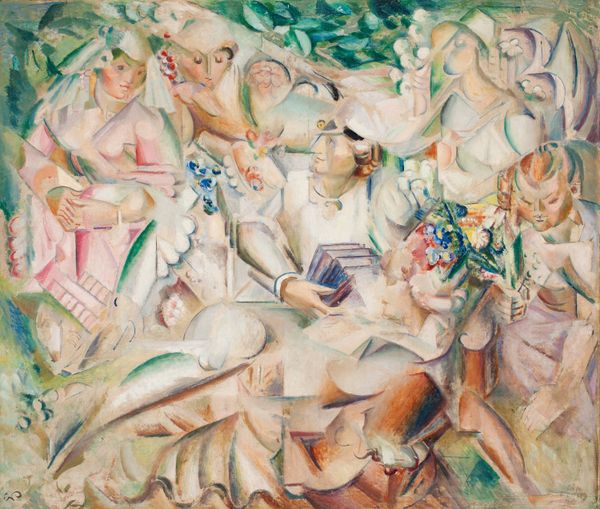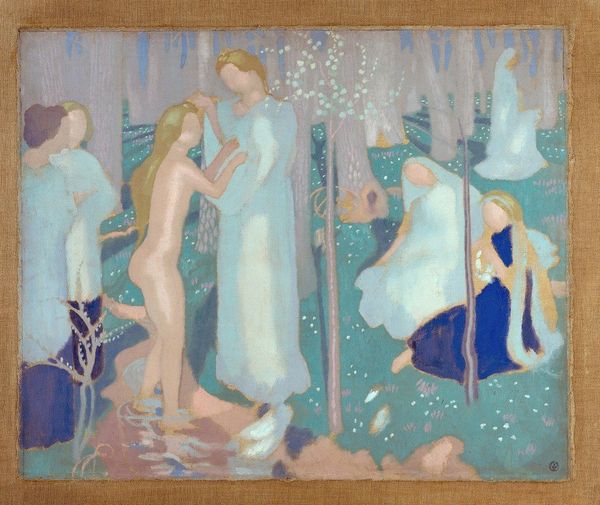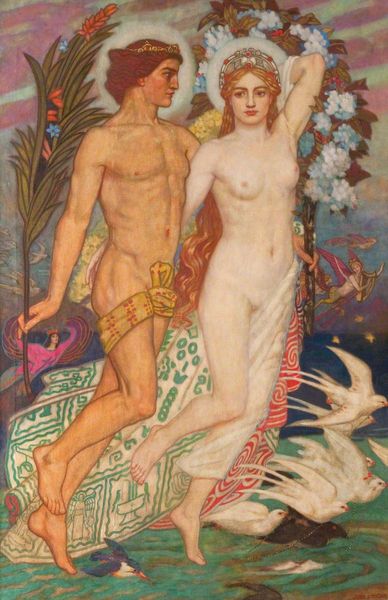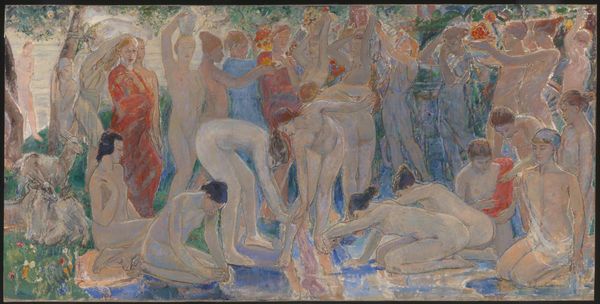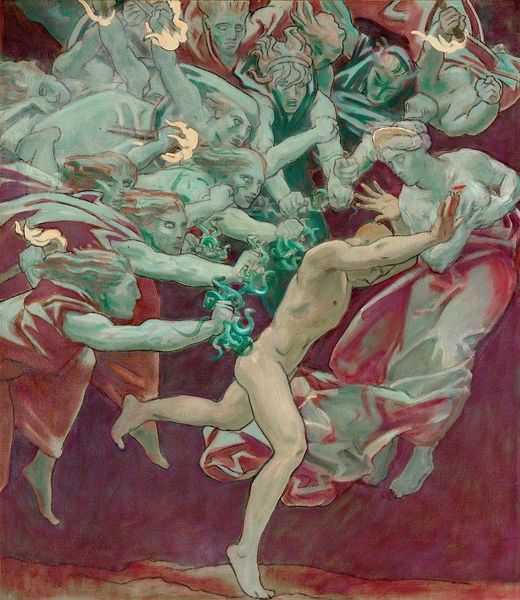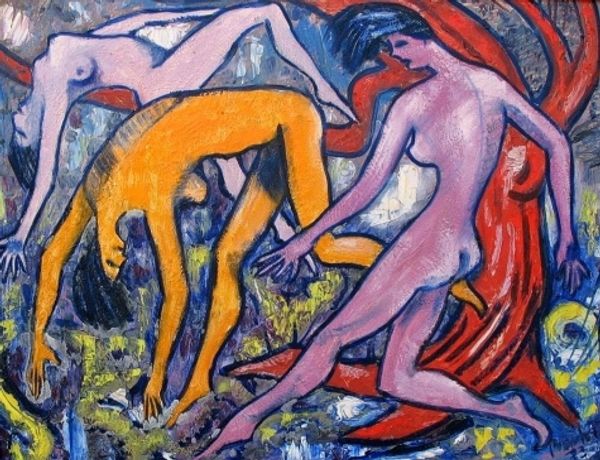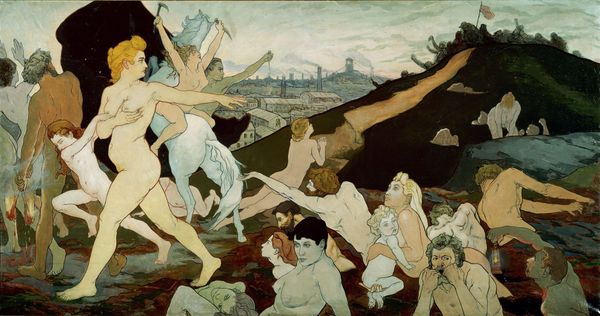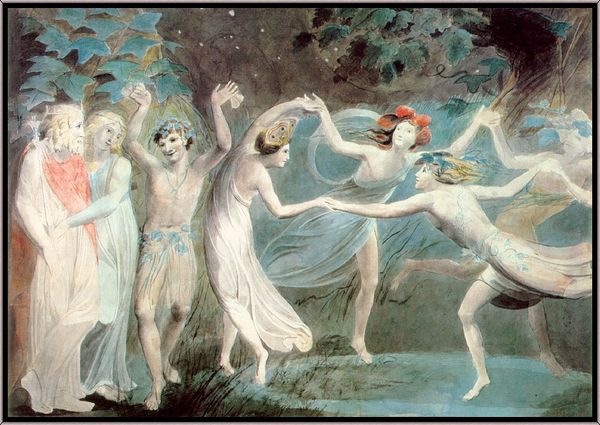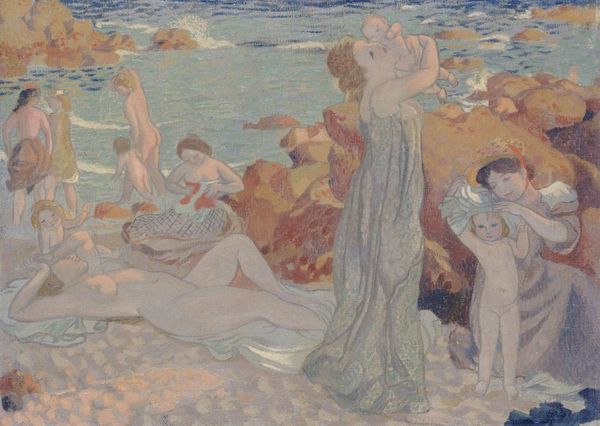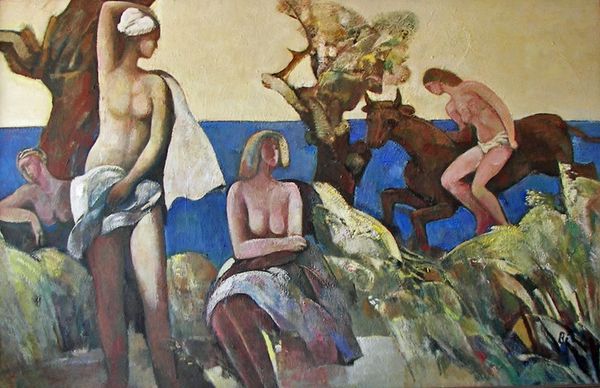
Copyright: Public domain
Curator: The sense of swirling movement is the first thing that grabs you, doesn't it? This John Duncan painting from 1933, titled *Unicorns*, plunges us right into a mythological chase scene rendered in oil paint. Editor: Definitely. My immediate reaction is one of tactile curiosity; look at the surface quality, like old velvet, and yet also sharp focus on specific textures, the sheen of those animals, human skin... Curator: Absolutely. Duncan, known for his symbolist works, emphasizes the sheer labor behind such fantasy scenes. He trained extensively in craft, from stained glass to tapestry, integrating these traditions. And such commissions allowed the artist to produce these scenes, under a complex patronage system that should be considered in any exhibition of symbolist art. Editor: So, viewing it from a cultural perspective, how was a piece depicting nude figures and mythical beasts received by the public at the time? Was there a discourse surrounding its potential challenges to societal norms? Curator: Contextually, Duncan worked within a specifically Scottish cultural and art historical landscape. The Scottish Renaissance, although somewhat late, fostered this intersection between local and ancient myth. The nude figures were perhaps less shocking within that embrace of classical tradition. And he showed work in Edinburgh. Editor: What strikes me most is the contrast. The subject, the classical allusions... Yet there’s something very tangible about how the forms are realized, with their roughhewn paint applications that give it such weight. Was it attempting to convey, literally to paint out in an aesthetic way, the complex power structure in society, here made manifest via patronage? Curator: Perhaps. Duncan straddled these worlds, referencing Highland folklore but also actively shaping the cultural nationalism of his era. It’s crucial to remember artists don't work in a vacuum. Institutions of art are an integral part of making sense of them. Editor: Precisely. Ultimately, considering its craftsmanship, display, and historical position reveals that an apparently simple myth-scape holds a rich tapestry of cultural nuances, doesn't it? Curator: I agree. We've illuminated so many facets within this mythological artwork—the process of creating it, its initial reception. I will look at this now, differently.
Comments
No comments
Be the first to comment and join the conversation on the ultimate creative platform.
